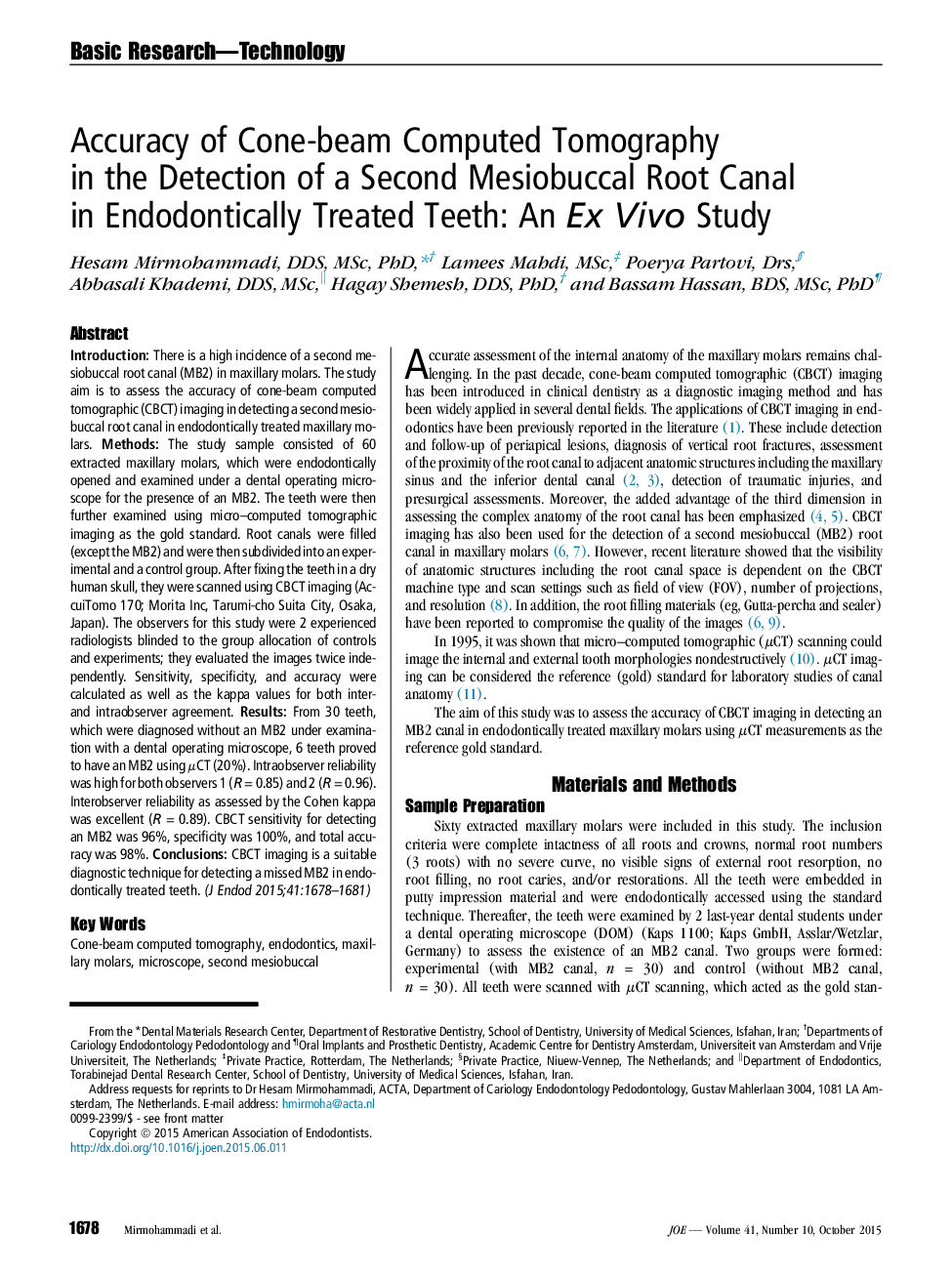| Article ID | Journal | Published Year | Pages | File Type |
|---|---|---|---|---|
| 3148069 | Journal of Endodontics | 2015 | 4 Pages |
IntroductionThere is a high incidence of a second mesiobuccal root canal (MB2) in maxillary molars. The study aim is to assess the accuracy of cone-beam computed tomographic (CBCT) imaging in detecting a second mesiobuccal root canal in endodontically treated maxillary molars.MethodsThe study sample consisted of 60 extracted maxillary molars, which were endodontically opened and examined under a dental operating microscope for the presence of an MB2. The teeth were then further examined using micro–computed tomographic imaging as the gold standard. Root canals were filled (except the MB2) and were then subdivided into an experimental and a control group. After fixing the teeth in a dry human skull, they were scanned using CBCT imaging (AccuiTomo 170; Morita Inc, Tarumi-cho Suita City, Osaka, Japan). The observers for this study were 2 experienced radiologists blinded to the group allocation of controls and experiments; they evaluated the images twice independently. Sensitivity, specificity, and accuracy were calculated as well as the kappa values for both inter- and intraobserver agreement.ResultsFrom 30 teeth, which were diagnosed without an MB2 under examination with a dental operating microscope, 6 teeth proved to have an MB2 using μCT (20%). Intraobserver reliability was high for both observers 1 (R = 0.85) and 2 (R = 0.96). Interobserver reliability as assessed by the Cohen kappa was excellent (R = 0.89). CBCT sensitivity for detecting an MB2 was 96%, specificity was 100%, and total accuracy was 98%.ConclusionsCBCT imaging is a suitable diagnostic technique for detecting a missed MB2 in endodontically treated teeth.
